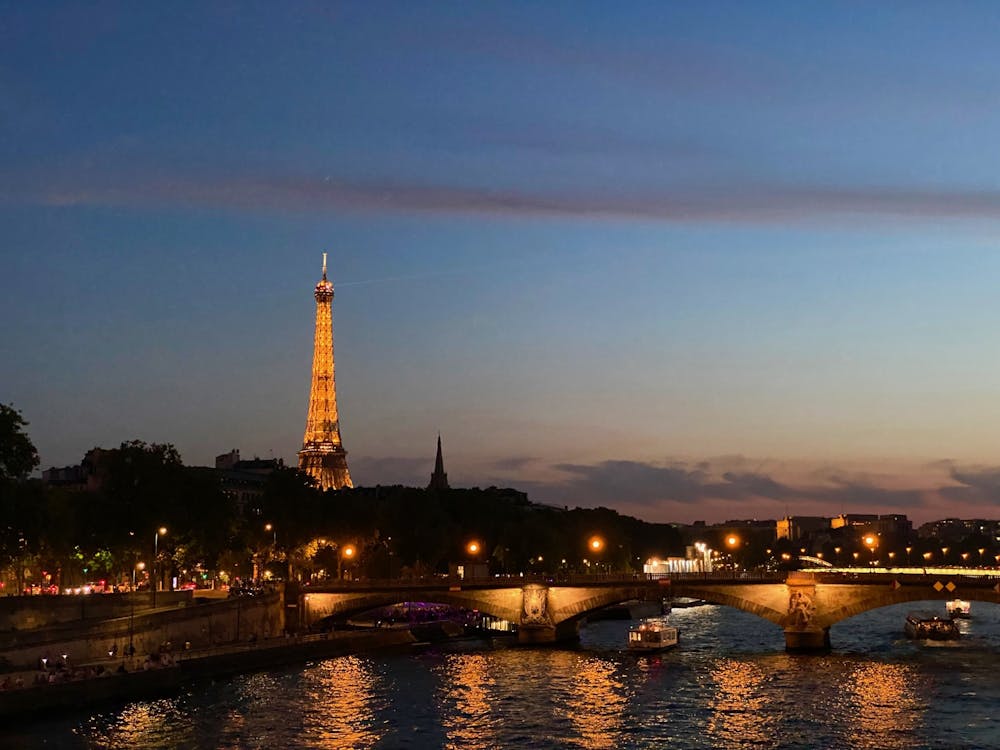This piece is part one of a two-part Dispatch collection and part of the Dispatch summer 2022 series. Dispatches at The Prospect are brief reflections from our writers that focus on their experiences during the summer break.
I. The radiant gift of Paris

José Pablo Fernández García / The Daily Princetonian
This first dispatch was originally written in French with the published translation courtesy of the author.
I believe that Paris has taught me how to see the world. I’m here for the first time since 2019. The last time was part of my solo travels, and this time, I’m taking a summer course on the French Revolution. But right now, I’m writing to record what I comprehend with my eyes.
Paris is famous thanks in part to its art. The city of the Mona Lisa, the territory of the Impressionists, has artistic and visual expression in its heart. However, its beauty, its visual richness, isn’t contained within the walls of its museums. In fact, the walls themselves often offer this same richness. The light stones of buildings throughout the city help produce this architectural richness, but a return to Princeton is needed to explain their importance in this story. A return to the Musée de l’Orangerie in 2019 is needed as well.
I arrived in front of the door of the Orangerie just before its opening in the morning. Thus, I waited in the Tuileries Garden, where the morning sun was already very hot and the shade under the trees remained rather fresh. Finally, the museum doors were open, and I entered, following a few other tourists. We weren’t many. In the tranquility of the rarely practically-empty Parisian museum during the summer, and under the sun’s pure light piercing through the skylights, I lost myself in Monet’s pond and water lilies that enveloped the two oval rooms.
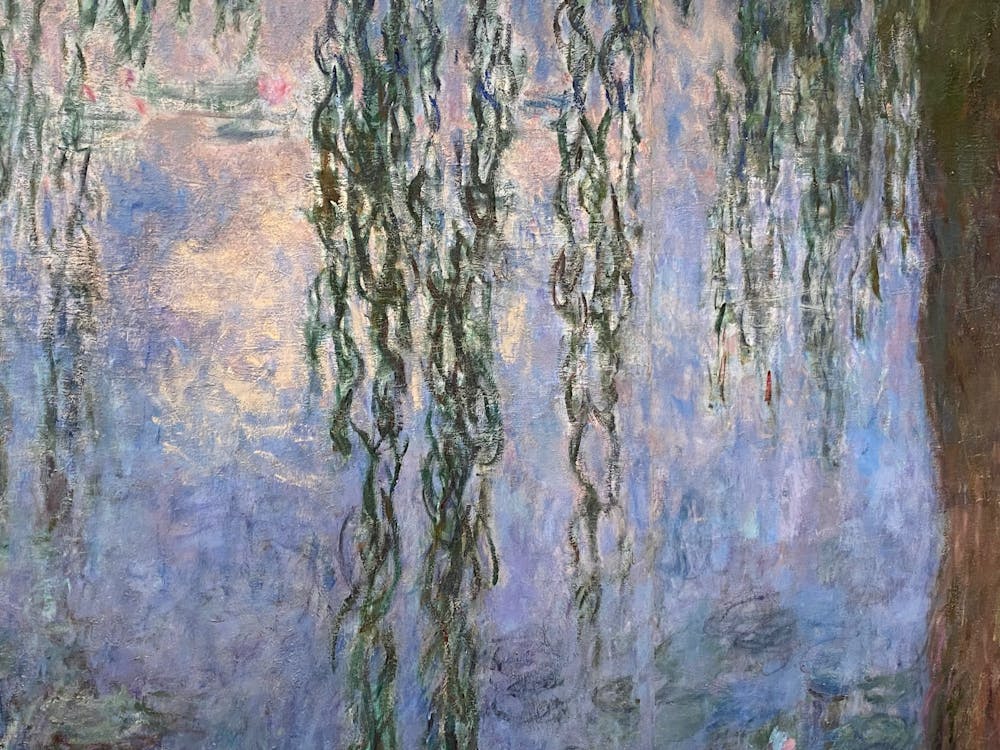
José Pablo Fernández García / The Daily Princetonian
One can debate the merit of the common popularity of Monet and the other Impressionists, but I must note their capacity to paint light. Not to paint the effects or the appearance of light. Not to show it. Not to capture it. I sincerely believe that they painted that intangible thing that reveals the world: that thing immaterial, but full of energy. I felt that energy while surrounded by the water lilies.
For another case, the same summer in 2019, I visited the Musée Rodin. Rodin’s sculptures, like “The Walking Man” or “The Age of Bronze,” have the same quality. Rodin did not sculpt the appearance of these men. He sculpted human vitality, the work of tense muscles, the lively energy present in all things, the delicate precarity of an instant preserved in heavy materials.
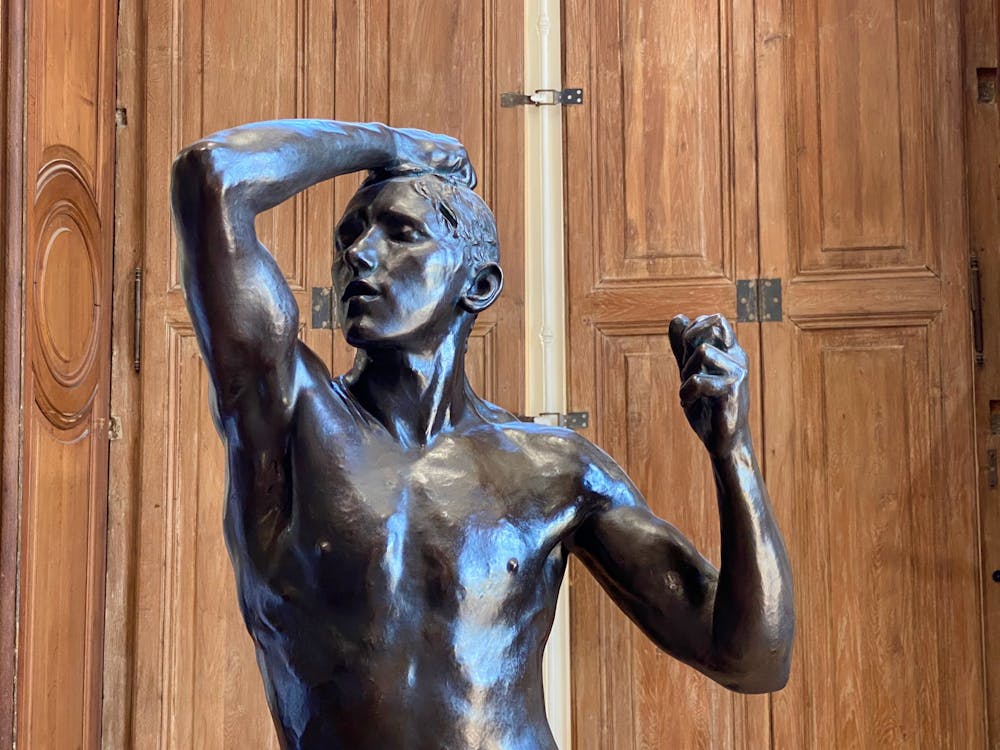
José Pablo Fernández García / The Daily Princetonian
I learned all this in 2019, and the following months that I spent in Princeton constantly reminded me of it. In particular, the stones of the University Chapel react to the sun traversing the sky. There’s a moment just before the sun sets in the spring and autumn evenings in which the stones facing west shine like gold, like the sun itself, while the rest of the stones melt into a mix of blues and purples. I love this brilliant contrast. It’s a gem because it exists only for a few ephemeral minutes. I could calculate the precise angle of the sun needed for this effect, but I prefer to leave it as a gift from nature. This all gives a magical air to the stones: this material from the ground transcends, becoming like a mirror for the light of the setting sun — a radiating source itself.

Throughout the first weeks of my course in Paris this summer, I’ve observed this same marvelous effect on the walls here. The Parisian stones offer the same gift. I’ve found it in Haussmanian buildings, in the churches and towers that dot Paris, and outside the Louvre. For an instant, they have shined while offering this gift.
This summer, I have returned to the same museums where I learned to see the world in this manner and to appreciate light like this, and these museum visits have reminded me of it. I’m trying to describe it with words, but I would have to be an Impressionist essayist to truly write the light in Paris and Princeton. At least: I’ve begun learning how to see, how to receive this gift, during my stays in Paris.
***
II. Pompon’s bear in the Paris heat

José Pablo Fernández García / The Daily Princetonian
It’s the second day of 100℉ or so heat in Paris, and today I’m escaping the heat by sitting in the lightly climate-controlled Musée d’Orsay, across from a polar bear. The bear, a sculpture, was made by François Pompon and is descriptively called “Ours blanc,” or “Polar Bear.” Everything about the sculpture, about today, is a bit too on the nose, and the sculpture does indeed have a perfectly pointed nose. It’s a nose our human affection for certain animals makes you want to pat — even if this one is made of cold hard stone.
It’s not the first time I’ve sat here staring at this bear. Just earlier on this trip, a couple of ‘Prince’ staffers and friends found me across from it. I have a souvenir pin of its profile from when I first saw it in 2019. It’s quite a popular sculpture among the rows of others made by maybe more globally famous artists. It’s easy to see why I enjoy sitting in front of this bear so often.
There’s something about the simple lines of this bear that is mesmerizing. It’s not realistic, not an anatomical model, not really. Yet, it’s unquestionably a polar bear. It speaks to whatever it is inside of us that has the job of seeing a shape or an image — seeing its short stumpy legs, the rotundness of its body diminishing into the calm elegance of its outstretched neck — and clocking it as a polar bear. But then it’s all slightly thrown into the air by the nearly cartoonish features of its face: the little outcrops for ears, two gentle eyes, a barely-there mark for a nose, and a mouth ever-so-slightly turned up at its ends as if smiling.
The face gives away something about what my mind actually recognizes. It doesn’t go off into the Arctic — maybe not even to the local zoo. I think it arrives first at Coca-Cola commercials and all those other similar representations of the animal. The sculpture speaks not so much to any scientific instinct as it does to some cultural instinct, reactive from our more sentimental side. (A perfectly-timed group of museum-goers walked by as I wrote this line and exclaimed, “Ay! El oso!” — Spanish for “Aw! The bear!” — with a cuteness-afflicted tone of voice.)
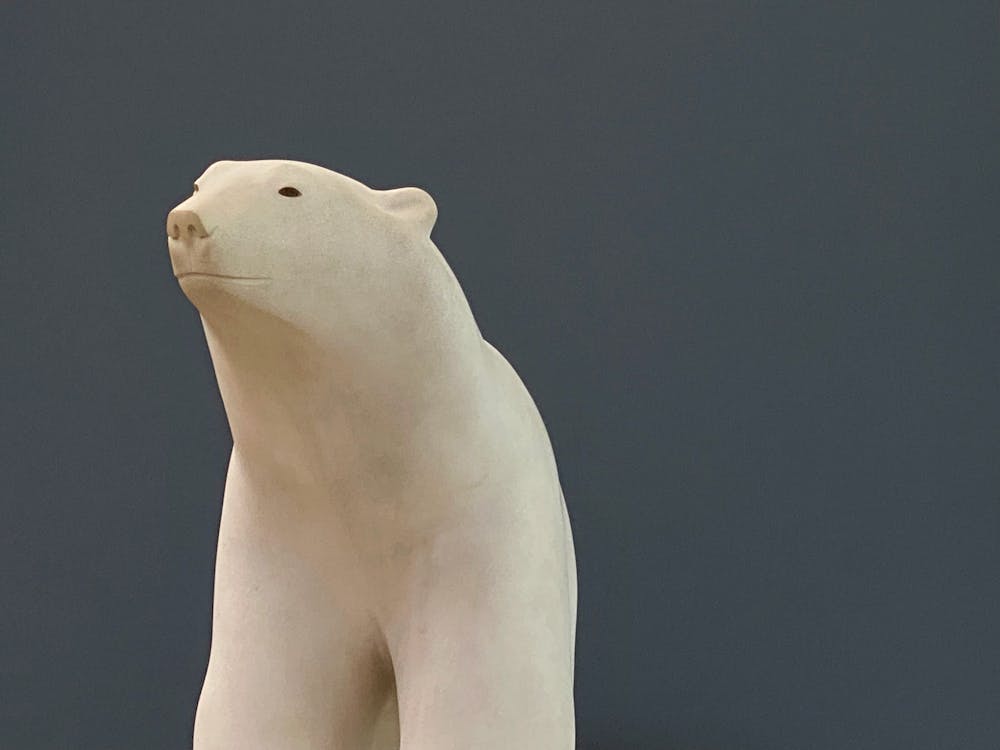
José Pablo Fernández García / The Daily Princetonian
That isn’t to say that the sentimental must come at a cost to the scientific; this sculpture and those cartoons aren’t outlandish exaggerations of a bear’s appearance. Besides, other older artists have committed more egregious misrepresentations — see dolphins in paintings, historically. It has all mostly just made me wonder what Pompon would have created today. The sculpture on display is reaching a century in age.
I don’t think a contemporary bear would be the same: no rotundness, no elegant lines, no gentle eyes or smile. Maybe it’s the deadly heat outside talking. Maybe it’s the memory of a recent article in The Atlantic about the potential last polar bears. Either way, today’s Pompon might carve haggard, striking lines. He might be lauded for sculpting a delicate, weak emaciated bear into the tricky, massive stone block.
I came to the museum today to escape the heatwave hitting Paris. It may be cooler sitting here across the bear, but I don’t think I successfully escaped. So I move on to the rest of the museum; I stumble upon Cuno Amiet’s “Snowy Landscape” next.
***
III. To see and be seen in Paris

José Pablo Fernández García / The Daily Princetonian
There is something about sight that just absolutely enthralls me. The world is full of the visually ravishing: a vibrant color, a mesmerizing movement, an ephemeral composition of life around us. Still, that’s only a fraction of what I find so lovely about sight. It’s not just the pretty or the picturesque that dazzles. What I love about sight is the very act of seeing. Seeing is one of the least inconsequential acts I’ve ever encountered.
A loving gaze. A stolen glance. A death stare. Every act of seeing is implicated in so much more than simply vision. So much can be said in the very silence of sight. And I haven’t even mentioned the thrills of being on the other end of it all, of being seen. To feel a loving gaze wash over one’s face. To feel the prick and scurrying departure of the stolen glance. To feel the crushing weight of the death stare, counteracted by any meager confidence one can muster. It’s all so alive.
Likely, this has all been on my mind lately because of how much art I’ve viewed in recent weeks. The paintings and sculptures I’ve stood in front of and stared at are inextricable from sight. I sometimes consider a piece of art the preservation of how a particular person — the artist — views the world. So then I compare it to my own visions. I can learn from them. I can wonder what it would result in for various things to be on the receiving end of each artist’s sight. Or to see my world as they did theirs. I find it most amazing when it’s visible how much an artist loved or cared for their subject. I think of how intense that feeling must’ve been for it to remain palpable for a stranger, often even many lives later. I imagine what it would be like to be viewed in such a manner.

José Pablo Fernández García / The Daily Princetonian
I don’t have a real-life directly comparable experience; no one has ever painted my portrait or sculpted my figure. At most, some have taken my picture. That might be close enough for now — after all, so much of life today is about capturing and sharing ourselves through pictures. And I think this explains why I often loathe taking selfies so much: In my view, it falls so flat in comparison to looking at a picture and discovering how someone else saw you, how they thought you should be captured and preserved in that instant. It speaks more to the real-life experience of being seen. Sometimes, it is in someone else’s sight that one sees oneself most clearly, most profoundly, most unsettlingly.
In fact, there’s a desire to be seen like that. Deeply. Profoundly. Right down to your core. Maybe not constantly. Maybe not by everyone. Maybe not in full. But it is a gift to be seen and to feel that, in that look, they know something of you. Rarely do people see all of you. Rarely do people see beyond the surface. Rarely do people see you repeatedly. But in the few instances when someone does any of those things, it is arresting. To feel such a gaze is disarming.
It was not even a week into my time in Paris that I was fully disarmed.
I’ve always loved maps, and I’ve always been very good at navigation — winding through streets, burrowing through transit tunnels, passing through labyrinths of rooms. I did it so often and so well when I was much younger that my family gave me a nickname related to this part of me. It didn’t stick beyond the occasional quip whenever I gave directions.
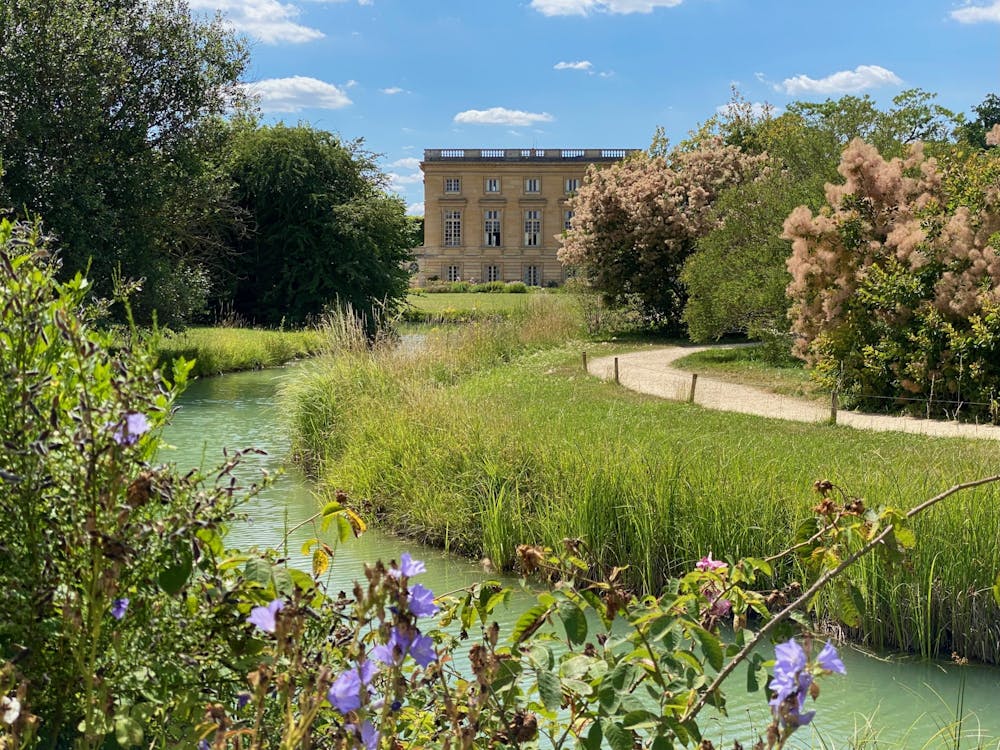
José Pablo Fernández García / The Daily Princetonian
I had never heard anyone else call me this nickname without myself having first told them about it. But soon after arriving in Paris, where my instincts kicked in to help navigate through the crowd and the metro, I heard it, this nickname, again, unprompted and newly original. If it weren’t for the need to keep walking with the rest of the group, I would’ve been stopped in my tracks right then and there when he called me that silly nickname for the first time.
Sure, it doesn’t take the most creativity to come up with this nickname — it’s a simple play on words and my name — but no one else ever had since my family first did. So in that moment, it felt like he had seen me that day and reached into my past to pluck out a memory only I would, could, possibly know.
But here’s the fickle thing about being seen: There’s so much unknown in how one is being seen by others. What feels disarming to the viewed may be but a passing glance to the viewer. There can exist a terrifying mismatch between the two.
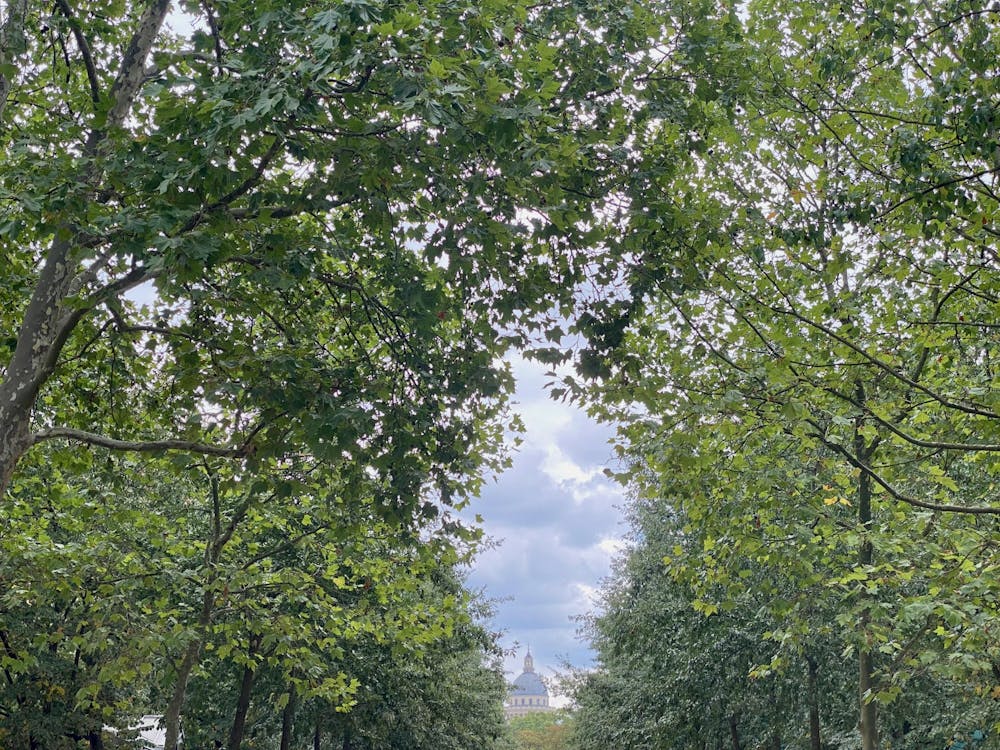
José Pablo Fernández García / The Daily Princetonian
Regardless, that moment of disarmament opened up the door for him to become a friend in Paris, quickly, more quickly than it usually takes to bridge the distance I typically reserve for new people. I found myself letting myself be seen in a way I usually guard against; I relaxed in a way I often don’t around Princeton folks, outside my own room, beyond myself. From me flowed jokes and stories and a certain ease I normally reserve until much later. I felt naturally, easily me when I’m so often acquainted with withholding much of myself.
And I enjoyed the benefits of all this as I was shown the bookshops, the wine shops, and more of Paris that I had hoped to discover but was unsure of where to look.
Unsure of where to look — we can spend so much of our lives in this uncertainty, hesitant in how we might face the world. But it’s always there — people and things, waiting to be seen. We’re always there, waiting to be seen by others, by one other person. That might be what I find so wonderful about sight, what enchants me.
Of course, it was never just about the practical act of seeing. Sight is tied up in all these more profound senses. To see the world, to see a person: They imply so many different things. One can only hope to experience the full range of their implications in this one life.

José Pablo Fernández García / The Daily Princetonian
José Pablo Fernández García is a rising senior from Loveland, Ohio and Head Prospect Editor at the ‘Prince.’ He can be reached at jpgarcia@princeton.edu.
Self essays at The Prospect give our writers and guest contributors the opportunity to share their perspectives. This essay reflects the views and lived experiences of the author. If you would like to submit a Self essay, contact us at prospect@dailyprincetonian.com.





